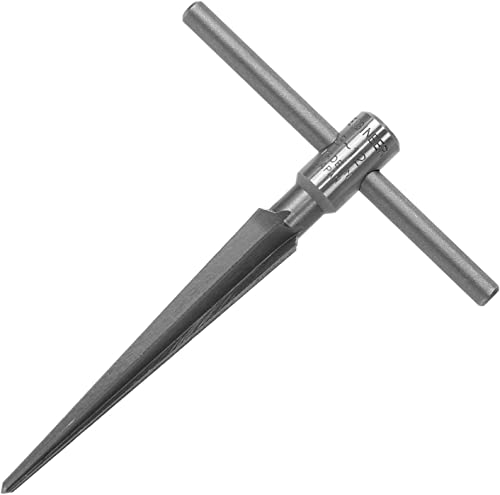What are reamers?
A reamer is a cutting tool used in metalworking to create precise and smooth holes. It is typically used after drilling a hole to improve its accuracy and surface finish. Reamers come in various sizes and shapes, but they all have cutting edges that remove small amounts of material as they rotate inside the hole. They can be used by hand or with a machine, depending on the application.
Benefits of using reamers for precision work
Reamers are commonly used in precision machining and manufacturing industries for several reasons:
- Improved hole accuracy: Reamers are designed to create highly accurate holes within tight tolerances. They can remove any irregularities left by the initial drilling process and ensure the desired hole diameter is achieved.
- Surface finish: Reamers produce a smoother surface finish compared to drilling alone. The cutting edges of a reamer leave a polished finish on the walls of the hole, reducing the need for additional finishing processes.
- Roundness and concentricity: Reaming helps improve the roundness and concentricity of the hole. By removing small amounts of material evenly from all sides, reamers ensure the final hole is perfectly round and aligned with the original drilling axis.
- Size control: Reamers allow for precise control over hole size. They are available in various diameters, and each reamer removes a specific amount of material to achieve the desired size. This makes them ideal for applications that require precise hole dimensions.
- Tool longevity: While reamers need to be properly maintained and sharpened, they generally have a longer lifespan compared to drill bits. This makes them a cost-effective choice for precision work, as they can be used for multiple holes before needing replacement.
Types of reamers
There are several types of reamers available, each designed for specific applications and materials:
- Straight flute reamers: These reamers have a straight flute design and are suitable for general-purpose reaming in various materials.
- Spiral flute reamers: Spiral flute reamers have a helical flute design, which helps with chip evacuation during the reaming process. They are often used in softer materials.
- Shell reamers: Shell reamers have a cylindrical body with cutting edges on the end face. They are used for enlarging existing holes.
- Adjustable reamers: These reamers have adjustable blades, allowing for precise control over the hole size. They are commonly used in maintenance and repair work.
- Expansion reamers: Expansion reamers can be adjusted to various diameters and are often used for finishing smaller holes.
Using reamers effectively for precision work
To achieve the best results when using reamers for precision work, follow these guidelines:
- Ensure proper alignment and stabilization of the workpiece to prevent unwanted movement during the reaming process.
- Use cutting fluid or lubricant to improve chip evacuation and reduce friction between the reamer and the workpiece.
- Select the appropriate type and size of reamer for the job. Consider the material being reamed and the desired hole dimensions.
- Inspect the reamer for any damage or wear before each use. Sharpen or replace the reamer as necessary.
- Maintain proper cutting speeds and feeds to prevent overheating and premature tool wear.
Reamers are an essential tool for precision work in machining and manufacturing industries. They offer numerous benefits, such as improved hole accuracy, surface finish, roundness, and concentricity. By properly selecting and using reamers, manufacturers can achieve high-quality results and ensure the precise dimensions of the holes they create. Whether used by hand or with a machine, reamers are a valuable asset when it comes to producing precise and smooth holes in metalwork.






